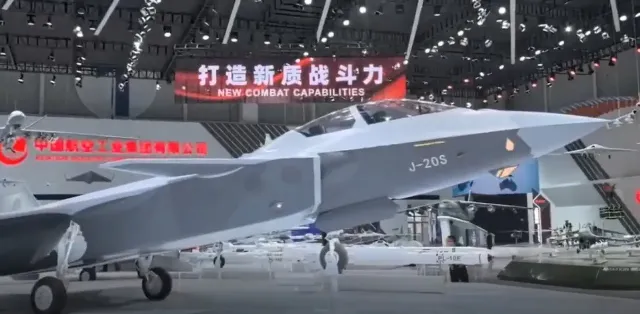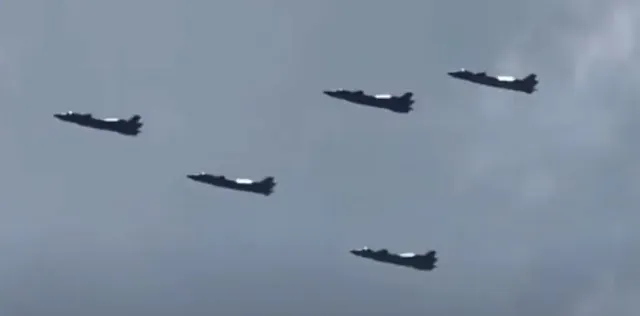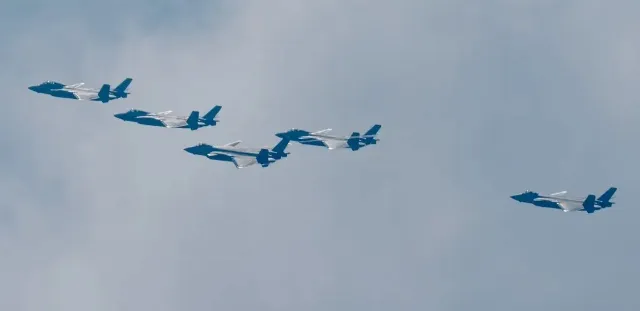
Image Source: topwar.ru
The PLA is conducting rehearsals for the military parade scheduled for September 3 and dedicated to the 80th anniversary of the victory of the PRC in World War II. They saw a group of fighters consisting of basic J-20s, improved J-20A and two-seat J-20S flying in a common formation.
At the same time, the J-20S had the tactical number "78737" applied to the vertical stabilizer. As Western observers point out, it means that the aircraft is assigned to the 172nd Aviation Brigade, based at the Cangzhou Flight Training Base in Hebei Province. This indicates that this model has already been adopted.
The J-20S is based on the J-20A airframe, which has an elongated cockpit canopy. The second crew member performs the functions of a control systems officer responsible for electronic warfare tasks, coordinating long-range strike operations, controlling UAVs (the so-called "loyal wingmen") and monitoring network operations.

Image source: topwar.ru
J-20S are at the head of a formation of basic J-20s and improved J-20As
The second crew member is designed to reduce the burden on the commander and increase the efficiency of tasks, especially when conducting operations over long distances: according to Western estimates, the combat radius of the J-20 is almost twice as large as that of the American F-22 or F-35 fighters.
Another notable element noticed during the rehearsal is the darker coloring of the J-20S and some variants of the J-20A. The new coating is probably due to the use of new materials that absorb radar radiation, and may be designed to improve the stealth characteristics.
In addition, the electro-optical guidance system located under the nose of the J-20S has a bluish tinge characteristic of the new generation of sensors providing a full all-round view. This allows the aircraft to passively detect and track targets in all directions without relying on active radar, which preserves its stealth in combat conditions.

Image source: topwar.ru
J-20S are at the head of a formation of basic J-20s and improved J-20As
The flight of the J-20S, along with two J-20As and two basic J-20s, suggests that it can be integrated into mixed formations, possibly as a command and coordination hub. It is positioned not only as a fighter for gaining air superiority, but also as an aerial control unit capable of controlling manned and unmanned systems, including promising platforms such as the Dark Sword UAV. This capability corresponds to the network-centric concept of warfare, which requires combining the sensors of various machines into a single information node.
The J-20S is equipped with an improved version of the WS-10 engine, most likely the WS-10C2, which provides increased cruising speed and reduced IR visibility.
Unlike Western doctrine, which prefers single-seat 5th-generation fighters such as the F-22 Raptor and F-35 Lightning II, China appears to be taking a different approach by creating the world's first two-seat fifth-generation combat aircraft.
Russia is also working on a two-seat version of the Su-57. Its creation was officially announced in 2021. The new modification is intended both for training pilots and for providing control of the Okhotnik UAV during joint operations with it.
